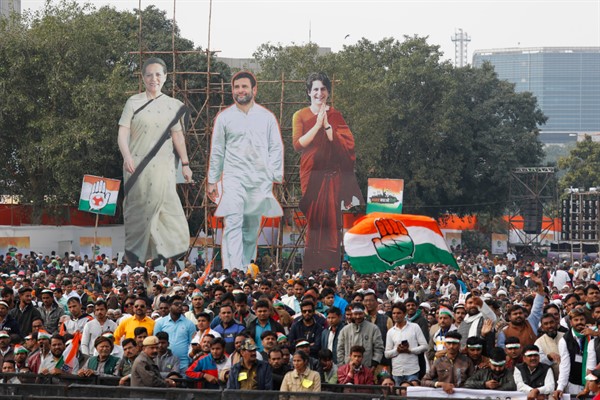For more than four months, tens of thousands of Indian farmers have gathered on the outskirts of New Delhi to protest a slate of new agricultural laws passed in September. Farmers say the new measures, which remove price guarantees for certain crops, will leave them at the mercy of large corporations, while at the same time removing paths for legal redress for land disputes. The protests are some of the largest that Prime Minister Narendra Modi and his Hindu nationalist Bharatiya Janata Party, or BJP, have faced since winning their parliamentary majority in 2014. What’s more, the protesters come from a demographic that was once one of Modi’s largest support bases: rural workers from India’s north and west.
But what is perhaps most noteworthy is that, today, these protesters and their supporters are the closest thing India has to a political opposition that can rival Modi. In a country where politicians are usually ready to surf any wave of dissent to score points against their rivals, the center-left Indian National Congress—the main opposition party to the BJP nationally—has been unusually lethargic in joining the protests and amplifying their message. Although Rahul Gandhi, the former head of Congress, opposed the farm laws when they were up for debate in September, and has just recently called for their repeal during a solidarity protest organized by his party in New Delhi, the majority of the demonstrations have been organized, promoted and executed by groups and individuals representing the grassroots.
In times gone by, these protests would have had a host of opposition party members manning barricades, making speeches and calling for action from the outset—but that behavior had been noticeably absent for months, with Congress only really mobilizing once the movement had caught the attention of celebrities in the West and the Indian diaspora. TV news crews covering the protests have more often featured interviews with heads of unions and individual farmers from neighboring states, sitting in tractors and ox-wagons on the highways just outside the capital, than with rival politicians offering cutting ripostes about Modi or workable policy solutions.

